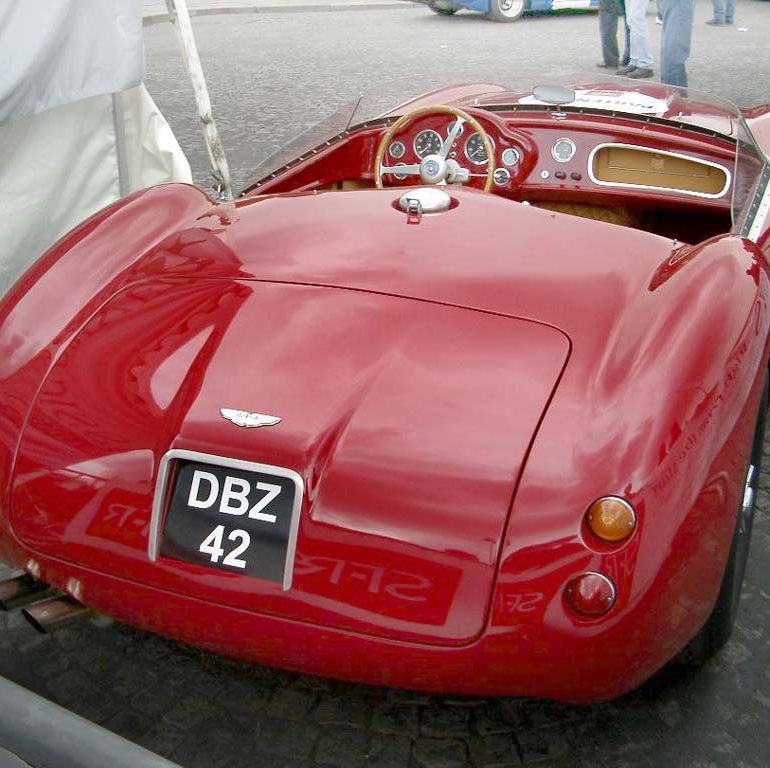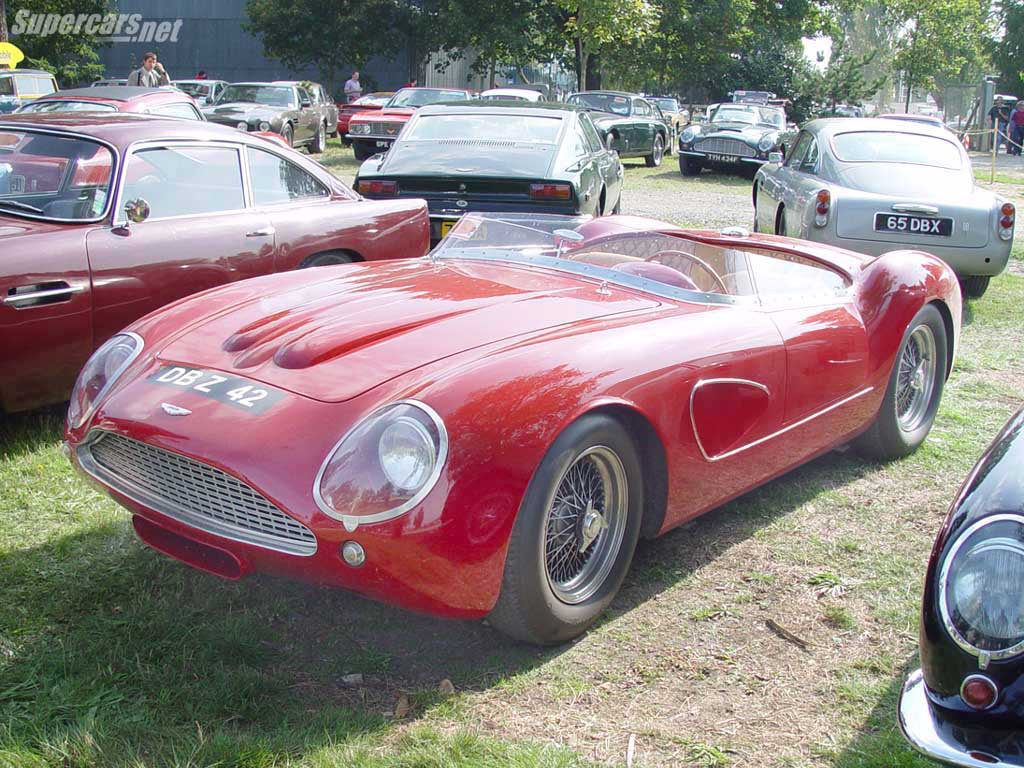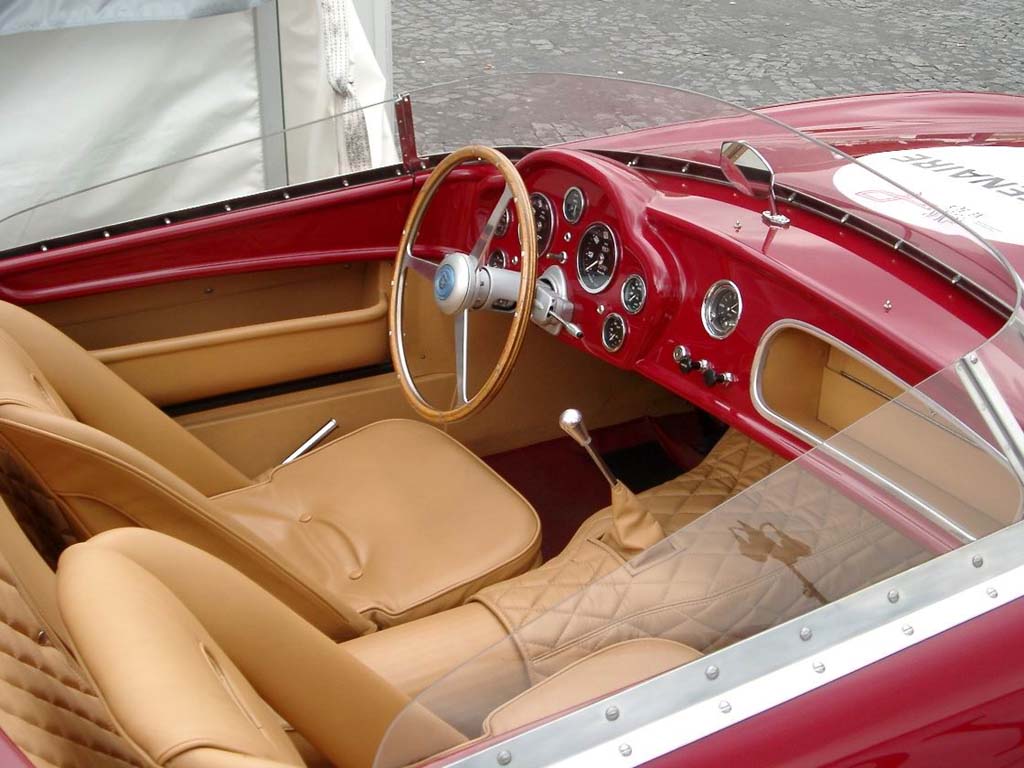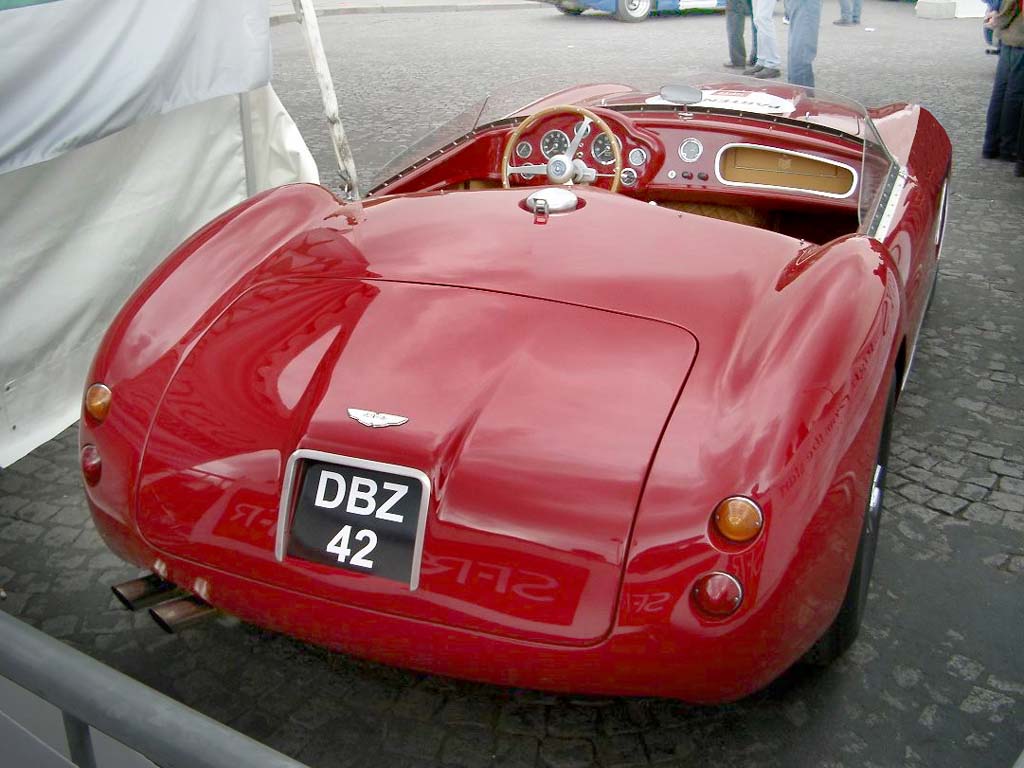2001 Aston Martin DB4 GT Zagato Barchetta
As the Zagato DB4 is one of the most sought after English supercars, it is no surprise that there is a great desire to replicate one. During the 80’s, while the sports car market was on the rise, the heads of Aston Marin Engineering decided to start production on several recreations. This move would controversially push the production beyond the 19 examples that already existed.
The term replica comes to mind, but when Aston Martin Engineering set out to recreate one of their most important cars, no expense was spared to make them exact copies of an original. These recreations were based on left over DB4 GT chassis, specifically #0192, #0196, #0197 and #0198. Every component beyond the chassis was manufactured to exacting standards by AM Engineering. Even ex-Zagato employees were used to create the lightweight, hand-formed body. Essentially the only aspect which separated the early Zagato cars from their newer Sanction 2 versions was the thirty year time span in which they were created.
Even though the intention was to create only four additional examples in 1987, more DB4 Zagato recreations were completed in 2000 and 2001. These included two Sanction 3 Coupes and one unique DB4 Barchetta!
The DB4 Barchetta was an ambitious project for AM Engineering to take on. It started life as a standard DB4 chassis, which was reengineered to include a shorter wheel base. Like every convertible, considerable rigidity was introduced into the chassis to cope with the loads normally absorbed by the roof.
As for performance, the DB4 Barchetta benefits from a number of tasty revisions beyond the standard specification. Such modifications include larger 4.2-liter, inline-6 engine producing 350 bhp. Being almost ten inches shorter, the Barchetta body is also significantly smaller than the coupe. Both the smaller chassis and body help the Barchetta achieve a weight that is almost 300 pounds lighter than the coupes.
After years of fabrication, the Barchetta plays a convincing period Zagato. The manufacture of the body and chassis closely represent the methods used on original cars. While some enthusiasts don’t want a saturated Aston market, especially by custom ‘replicas’, this car offers an almost exacting glimpse on a car that might have been created if production ever increased beyond 19 car
In Detail
| submitted by | Richard Owen |
| engine | Aluminum, Twin Spark, Inline-6 |
| position | Front Longitudinal |
| aspiration | Natural |
| valvetrain | DOHC 2 Valves / Cyl |
| fuel feed | Tripple 50DC01/SP Webers |
| displacement | 4200 cc / 256.3 in³ |
| power | 261.0 kw / 350 bhp @ 6000 rpm |
| specific output | 83.33 bhp per litre |
| bhp/weight | 318.18 bhp per tonne |
| torque | 433.86 nm / 320 ft lbs @ 5000 rpm |
| body / frame | Aluminum Alloy over Steel & Aluminum Chassis |
| driven wheels | Front Engine / RWD |
| front tires | 6.00×16 |
| rear tires | 6.00×16 |
| front brakes | Girling Hydraulic Discs w/4-Piston Calipers |
| f brake size | x 305 mm / x 12 in |
| rear brakes | DB5 Girling Hydraulic Discs |
| r brake size | x 274 mm / x 10.8 in |
| front wheels | F 40.6 x 15.2 cm / 16.0 x 6 in |
| rear wheels | R 40.6 x 15.2 cm / 16 x 6 in |
| steering | DB4 Rack & Pinion |
| f suspension | Wishbones w/Coil Springs, Telescopic Dampers, Anti-Roll Bar |
| r suspension | Live Axle w/Coil Springs, Lever Arm Dampers, Transverse Watts Linkage |
| curb weight | 1100 kg / 2425 lbs |
| length | 4039 mm / 159.0 in |
| transmission | 4-Speed Manual |
| gear ratios | 2.49:1, 1.85:1, 1.25:1, 1.00:1, :1 |
| final drive | 3.31:1 |
| top speed | ~257.5 kph / 160.0 mph |
| 0 – 60 mph | ~5.0 seconds |
| 0 – 1/4 mile | ~13 seconds |







